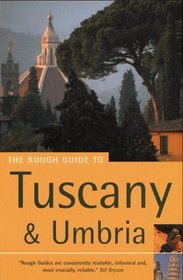Search -
Rough Guide to Tuscany & Umbria (Rough Guide)
Rough Guide to Tuscany Umbria - Rough Guide
Author:
Tuscany and Umbria harbour the classic landscapes of Italy, familiar from a thousand Renaissance paintings, with their backdrop of medieval hill-towns, rows of cypress trees, vineyards and olive groves, and artfully sited villas and farmhouses. It’s a stereotype that has long held an irresistible attraction for northern Europeans. Shelley ... more »
Author:
Tuscany and Umbria harbour the classic landscapes of Italy, familiar from a thousand Renaissance paintings, with their backdrop of medieval hill-towns, rows of cypress trees, vineyards and olive groves, and artfully sited villas and farmhouses. It’s a stereotype that has long held an irresistible attraction for northern Europeans. Shelley ... more »
ISBN-13: 9781843530558
ISBN-10: 1843530554
Publication Date: 5/12/2003
Pages: 768
Rating: ?
ISBN-10: 1843530554
Publication Date: 5/12/2003
Pages: 768
Rating: ?
0 stars, based on 0 rating
Genres:
- Travel >> Europe >> Italy >> Tuscany
- Travel >> Europe >> Italy >> Umbria
- Travel >> Guidebook Series >> Rough Guide





